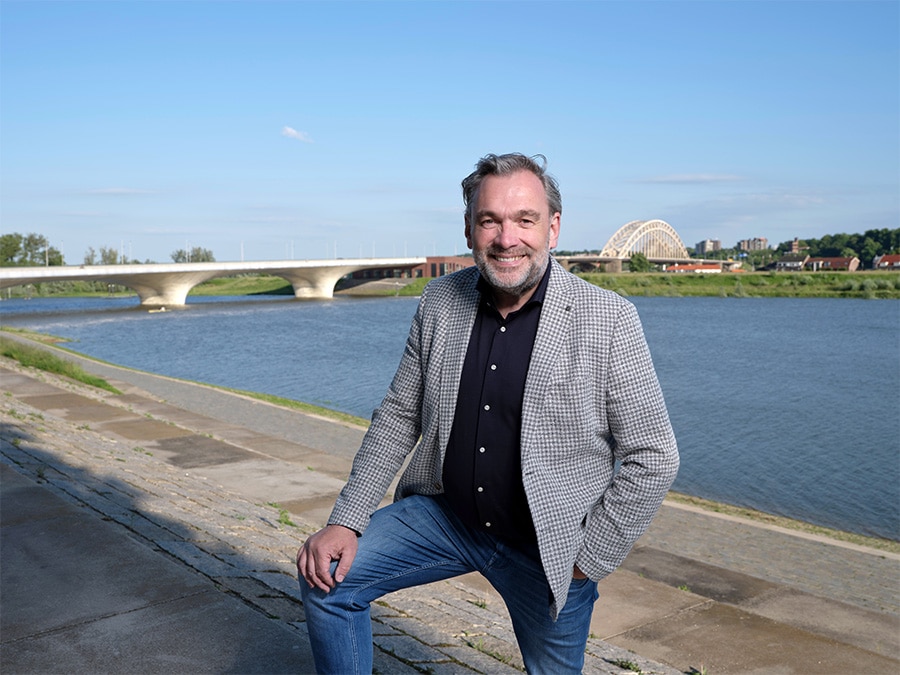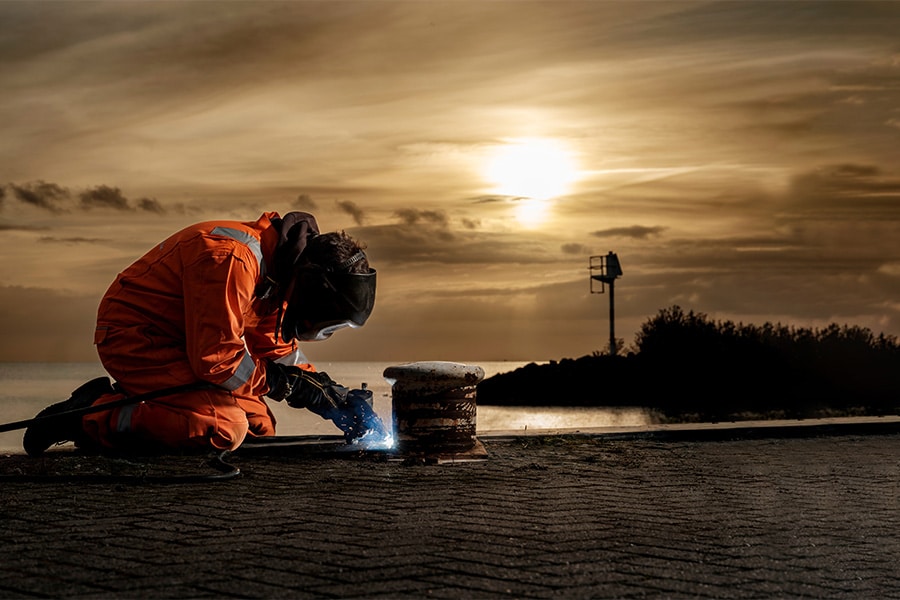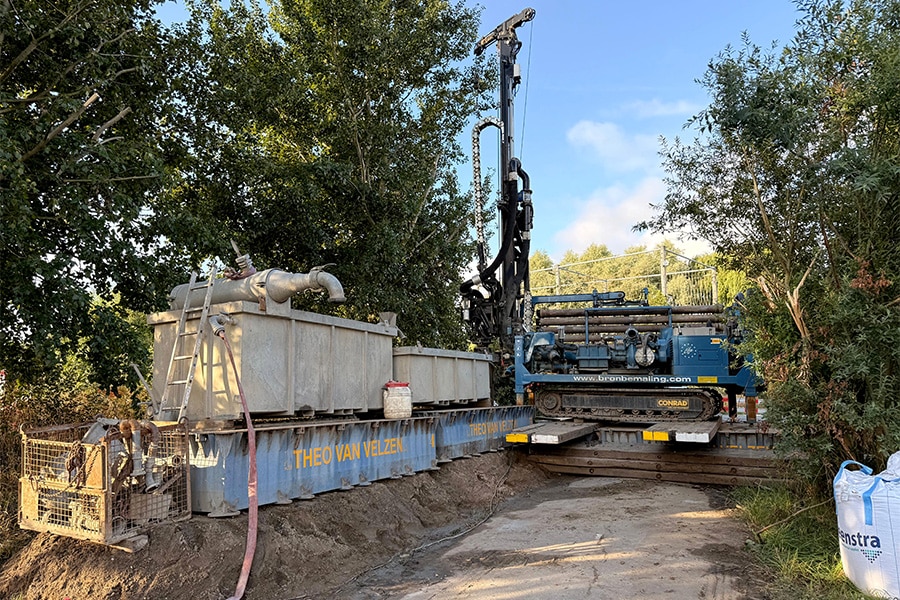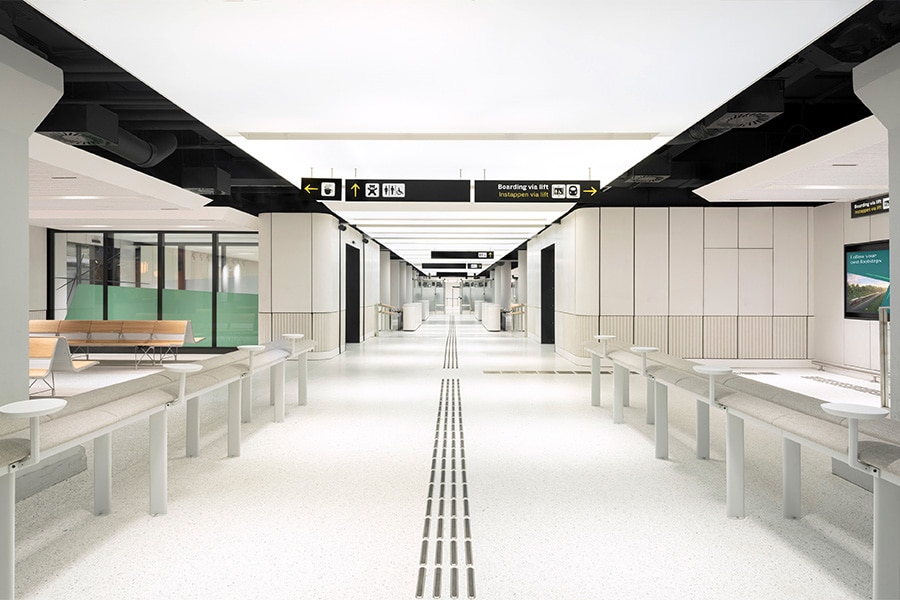
Collaboration and knowledge sharing are the pillars of the Seven Artworks project
Commissioned by Hoogheemraadschap Hollands Noorderkwartier (HHNK), the TAUW/Friso Civiel (TFC) combination is currently busy in North Holland making various engineering structures water safe. This is the first project in the Netherlands in which not dikes, but only engineering structures are being reinforced. Specifically, it involves seven locks that no longer meet the standard under the High Water Protection Program (HWBP) and were rejected as a result. When the work is completely completed in the fall of 2022, the locks will again be able to sufficiently retain the water. This will ensure the safety of the hinterland towards the future.
After thorough (procedural) preparation and arranging the various necessary permits, the realization work is currently in full swing. During the project, the Spuisluis Oostoever near Den Helder, the Sassluis in Enkhuizen and the Hornsluis, Noordersluis and Zuidersluis in Schardam will be physically reinforced. "Based on the written project plan Water Act, HHNK, in close cooperation with combination TFC, has already determined a preferred alternative for each lock in July 2019," says manager project management Karin Klein on behalf of HHNK. "This has resulted in the replacement of a set of wake doors and four gates at the Spuisluis Oostoever near Den Helder. The monumental Sassluis in Enkhuizen will receive two additional sets of doors. At the same time, two defective slides in the bypass sewer will be repaired. Of the three also monumental locks in Schardam, the current slide will be replaced by a new slide consisting of two parts. The lower part is movable, allowing the lock to be closed partially or completely. No physical work is planned for the floodgates in Broekerhaven and the Grote Sluis in Hoorn. Here we are only adjusting the closure protocol."

Great collaboration
During the implementation of the project, the three project partners are highly committed to far-reaching cooperation and knowledge sharing. An approach that results in extremely smooth transitions between the various project phases, rapid realization and a real 'feeling of togetherness', among other things. "This is a project which for the first time revolves exclusively around making a number of civil engineering structures in our management area water safe," says Klein. "You can therefore speak of a real pilot in which we are working together in a unique way with specialized market parties toward a common goal. All this is proceeding to our complete satisfaction. It tastes like more."

Unique project
Combinatie TFC is taking care of the physical works that are mostly carried out on the banks of the IJsselmeer. Geert van der Linden, construction expert and project manager on behalf of Friso Civiel (part of Friso Bouwgroep), describes the Seven Artworks project as unique. "Because subcontracting was done to a combination of engineering firm and contractor, we have been closely involved in this project from the very beginning. Together with our partner TAUW, we go through all phases, from exploration to realization. While this approach is new to us, it has an extremely beneficial effect on the end result and the project lead time. The schedule has remained unchanged since the exploration phase, so that the locks will be water safe in Q2 2022."
Specialties
After developing the preliminary design into an execution design, physical execution of the project began in mid-October. According to Van der Linden, this is a varied package of work that suits the TFC combination down to the ground. "In a technical sense, what we do here does not differ much from other works that come our way in hydraulic engineering. 'It is just oars as oars' (just as different, ed.)," said Van der Linden. What mainly characterizes this project is the cooperation between client HHNK and combination TFC. "That runs more than smoothly, also with the other partners who are going with us.
The success of this work requires the necessary specialties. With this in mind, we approached several parties at an early stage, each offering the necessary expertise and hands from their own specific design. One of these is restoration company Jurriëns Noord (part of Friso Bouwgroep), which will restore the Sassluis and the locks in Schardam. An activity that, like the other work, requires a thoughtful approach. After all, these are works of art with great historical value. Working carefully and well prepared is therefore a must."

Weighing solutions
Combination TFC realized the preferred alternatives for each lock, prepared the project plans within the framework of the Water Act and the EIA, and made both the final and implementation design for each lock. "For each structure, we weighed the possible solutions against each other and assessed their feasibility, affordability and effects on the environment," says Anton van Essen, project manager and contract manager on behalf of consulting and engineering firm TAUW. "This included input from various stakeholders through intensive stakeholder management. All this ultimately led to an appropriate response to our client's request."

Sharp contractor's view
Like Van der Linden, Van Essen describes the project as very special. "Besides our own knowledge and skills, we were also able to include Friso Civiel's expertise as early as the exploration phase and carry it through to the plan development phase and during realization. This allowed us to look at the execution alternatives with a sharp contractor's eye right from the start and we did not receive any objections to the requested required permits. At the same time, we were able to tackle all possible risks in advance. On all fronts: started early, gained much." A good example of this is the drying up during the planning phase of the five locks the combination is working on. An initiative that provided the opportunity to accurately assess the condition of the structures at an early stage, thus avoiding ambiguities and risks for the final design. This benefits both the execution and the final result.




